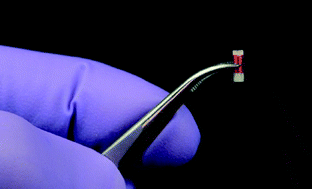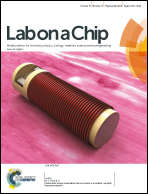Miniaturized, biopsy-implantable chemical sensor with wireless, magnetic resonance readout
Abstract
Biopsy is an important diagnostic tool for a broad range of conditions. Cancer diagnoses, for example, are confirmed using tissue explanted with biopsy. Here we demonstrate a miniaturized wireless sensor that can be implanted during a biopsy procedure and return chemical information from within the body. Power and readout are wireless via weak magnetic resonant coupling to an external reader. The sensor is filled with responsive nuclear magnetic resonance (NMR) contrast agents for chemical sensitivity, and on-board circuitry constrains the NMR measurement to the contents. This sensor enables longitudinal monitoring of the same location, and its simple readout mechanism is ideal for applications not requiring the spatial information available through imaging techniques. We demonstrated the operation of this sensor by measuring two metabolic markers, both in vitro and in vivo: pH in flowing fluid for over 25 days and in a xenograft tumor model in mice, and oxygen in flowing gas and in a rat hind-limb constriction experiment. The results suggest that this in vivo sensing platform is generalizable to other available NMR contrast agents. These sensors have potential for use in biomedicine, environmental monitoring and quality control applications.

- This article is part of the themed collection: Implantable Devices

 Please wait while we load your content...
Please wait while we load your content...